new posts in all blogs
Viewing: Blog Posts Tagged with: freedom, Most Recent at Top [Help]
Results 1 - 25 of 85
How to use this Page
You are viewing the most recent posts tagged with the words: freedom in the JacketFlap blog reader. What is a tag? Think of a tag as a keyword or category label. Tags can both help you find posts on JacketFlap.com as well as provide an easy way for you to "remember" and classify posts for later recall. Try adding a tag yourself by clicking "Add a tag" below a post's header. Scroll down through the list of Recent Posts in the left column and click on a post title that sounds interesting. You can view all posts from a specific blog by clicking the Blog name in the right column, or you can click a 'More Posts from this Blog' link in any individual post.

By: Heather Smith,
on 10/11/2016
Blog:
OUPblog
(
Login to Add to MyJacketFlap)
JacketFlap tags:
Books,
History,
freedom,
literacy,
slavery,
jerusalem,
America,
rebellion,
Confessions,
*Featured,
Nat Turner,
Birth of a Nation,
Arts & Humanities,
Birth of a Nation movie,
Patrick H. Breen,
slave revolt,
The Land Shall Be Deluged in Blood: A New History of the Nat Turner Revolt,
Add a tag
On Sixty Minutes, when filmmaker Nate Parker was asked if Birth of a Nation was historically accurate, he noted, “There’s never been a film that was 100 percent historically accurate. That’s why they say based on a true story and doesn’t say, ‘A true story.’” Hollywood may not be the best place to learn one’s history, but here are ten things that the new movie Birth of a Nation got right about Nat Turner’s revolt:
The post 10 things Birth of a Nation got right about Nat Turner appeared first on OUPblog.
by Sally Matheny
 |
| Honoring True Freedom |
In my youth, I did not realize the full value of my freedom. My understanding only went as far as my own limitations.
“Why can’t I watch that T.V. show?”
“When will I get to drive a car?"
“Where can I go with my friends?”
As I grew, so did my perception of freedom.
I learned people sacrificed their own freedom for mine.
I may never fully comprehend the price some have paid, or adequately appreciate those who are still hammering out ways to preserve my freedom.
One reason for my ignorance is because someone, for some reason, cared enough to protect me from that knowledge. I once heard a special agent say if an evil event didn’t make the news, because his team prevented it from happening, then their mission was accomplished.
On the morning of Barbed Wire Sunday, the people of East Berlin woke up to the sound of sirens. Investigating, they found that the government had found a way to stop them from leaving: the Berlin Wall. It was a great fence separating East Berlin from West Berlin. The two parts of Germany had been on tight terms for a while, and rumors of a third world war were plentiful.
The one hundred yards of smooth dirt leading up to the wall was called the "Death Strip." And the fence slowly evolved over the years into a 11.8 foot cement wall. Guardtowers were set on top, where soldiers would point their guns at anyone trying to escape East Berlin.
For twelve year-old Gerta, the rise of the Berlin Wall takes something more than freedom from her. A couple of days before Barbed Wire Sunday, her father and brother had traveled into West Berlin. The fence had split her family into two parts just like Germany.
Gerta knows she must take her remaining family members in the East to meet her family members in the West. But escaping isn't easy, and getting caught means death.
The German police threaten Gerta's family often, but the violence is minimal up until the end. I recommend it for 11+.

By: RachelM,
on 2/6/2016
Blog:
OUPblog
(
Login to Add to MyJacketFlap)
JacketFlap tags:
Books,
freedom,
Religion,
Philosophy,
Content,
Big Bang,
cognition,
self-determination,
*Featured,
libertarianism,
Immanuel Kant,
Determinism,
a priori,
Arts & Humanities,
Cognition Content and the A Priori,
robert hanna,
a posteriori,
Are you really free,
indeterminism,
philosophical argument,
Add a tag
How is human freedom really possible in the natural world as correctly described by modern physics, chemistry, biology, and cognitive neuroscience? Or, given the truth of modern science, are you really free? By 'real freedom,' I mean 'real free will and real rational agency'.
The post Are you really free? Yes: a new argument for freedom appeared first on OUPblog.

By: JOANNA MARPLE,
on 1/19/2016
Blog:
Miss Marple's Musings
(
Login to Add to MyJacketFlap)
JacketFlap tags:
children's books,
hope,
freedom,
animals,
Book recommendation,
horses,
conservation,
endangered species,
animal rights,
cruelty,
Endangered Animals,
young activists,
Terri Farley,
the West,
Animals Endangered,
mustangs,
WILD AT HEART,
Melissa Farlow,
Add a tag
I know, I know, I promised you interviews on Tuesdays and here I come with a book review. This is a book of passion and courage; a book championing, as I often do on my blog, the rights of other … Continue reading →

By: KatherineS,
on 1/13/2016
Blog:
OUPblog
(
Login to Add to MyJacketFlap)
JacketFlap tags:
America,
state,
Country,
society,
Oxford World's Classics,
common sense,
Liberty,
thomas paine,
English Constitution,
*Featured,
Right of Man,
United Stated,
freedom,
Literature,
Philosophy,
election,
immigration,
government,
Add a tag
Some writers have so confounded society with government, as to leave little or no distinction between them; whereas they are not only different, but have different origins. Society is produced by our wants, and government by our wickedness; the former promotes our happiness positively by uniting our affections, the latter negatively by restraining our vices. The one encourages intercourse, the other creates distinctions. The first a patron, the last a punisher.
The post Thomas Paine’s Common Sense turns 240 years old appeared first on OUPblog.

By:
[email protected],
on 9/6/2015
Blog:
Perpetually Adolescent
(
Login to Add to MyJacketFlap)
JacketFlap tags:
Book News,
compassion,
Freedom,
nature,
Environment,
Seagull,
Walker Books,
humanity,
Bob Graham,
New Book Releases,
Random House Australia,
Working Title Press,
danny snell,
Book Reviews - Childrens and Young Adult,
Romi Sharp,
How the Sun Got to Coco's House,
Ollie and the Wind,
Ronojoy Ghosh,
Add a tag
The scent of Spring is in the air. But that’s not all that’s lifting us up. From the tiny details to the wider world, our environment has so much to offer. For different reasons, these following picture books discover beauty and how the elements of nature can capture our hearts and strengthen our human kindness. […]

By: Hannah Paget,
on 5/28/2015
Blog:
OUPblog
(
Login to Add to MyJacketFlap)
JacketFlap tags:
freedom,
Sociology,
Politics,
privacy,
surveillance,
Social Sciences,
liberal democracy,
UKpophistory,
edward snowden,
open university,
OU,
Birkett,
David vincent,
I hope I don't intrude,
Sir James Graham,
Books,
*Featured,
Add a tag
In its recent report, Privacy and Security: A modern and transparent legal framework, the Parliamentary Intelligence and Security Committee pondered on the scale of public concern about digital surveillance. A feature of the current controversy is its narrow chronology. The decades before 9/11 correspond to the medieval period and the centuries before the internet are lost in the mists of time. The legislation that controls the behaviour of the security agencies, particularly the Acts of 1989, 1994 and 2000, is generally seen as obsolete.
The post Surveillance and privacies appeared first on OUPblog.
by Sally Matheny
 |
| Respect and Remember (Photo courtesy of flickr.com) |
Respect and remember.
They defended your right to worship freely and to speak passionately and publicly for change.
They carried arms in hopes that you would not have to, but also they protected your right to bear arms if you so desire.
Even though they did not know you, they placed themselves as a shield to prevent evil from entering your homes.
They fought with all their might for your life and liberty
even though it cost them their own.
“Greater love has no one than this: to lay down one’s life for one’s friends.” John 15:13
Enjoy your day off from work. Relish in time spent with friends and family. Our fallen heroes would want you to enjoy the freedoms they fought so hard to protect.
But, surely, the least we can do is lay down our golf clubs, our T.V. remotes, and cell phones to respect and remember those who laid down their lives for us.
 |
| Photo by Sally Matheny |
Please pause at 3:00 p.m. on Memorial Day and thank God for those who have served and died for our country and our freedom.
Respect and remember.
By:
Elizabeth Varadan,
on 4/27/2015
Blog:
The Children's Book Review
(
Login to Add to MyJacketFlap)
JacketFlap tags:
Alice B. McGinty,
General,
History,
Freedom,
India,
featured,
Justice,
Gandhi,
Historical Figures,
Thomas Gonzalez,
Add a tag
Gandhi, A March to the Sea is lovely book that should be in public libraries, home libraries, and school libraries.
by Sally Matheny
 |
| Bibles Removed From N.C. Church |
The event didn’t make the headlines, but it happened in a North Carolina Baptist church on a chilly, Sunday morning in 2015.
The black Bibles, normally nestled between every two hymnals in each pew, weren’t missed until the morning worship music had already begun. A few people never noticed, but several of the congregation grew concerned. One of the deacons, shaking his head and shrugging his shoulders, discreetly whispered the discovery to the pastor. The pastor nodded in response to the deacon as the praise band continued their music.
When the music ended, the pastor returned to the pulpit and announced for the children to come for the children’s message.
The pastor was my husband. The church was my place of worship.
Read more »
by Sally Matheny
 |
The Story of St. Valentine
by Voice of the Martyrs/Cheryl Odden |
Hidden under layers of commercialism, it’s difficult to find the origins of Valentine’s Day.
One of my favorite children’s books on the topic is The Story of Saint Valentine, by The Voice of the Martyrs and Cheryl Odden. It’s a beautifully illustrated book about faith, love, and courage. It’s the story of one Christian’s brave perseverance in standing for truth no matter what the cost.
I think Valentine’s Day is a great day for remembering today’s persecuted Christians. Many think of Christian persecution in faraway countries.
One need only look 1,518 miles. The Voice of the Martyrs gives eye-opening information about the developments in Cuba.
“Despite improvements, the Cuban government still arrests, mistreats, marginalizes and openly opposes Christians. Christians are often prevented from working in certain jobs. Though there have been fewer arrests, both church leaders and evangelists have been detained for periods, have had personal items confiscated, property destroyed, and some have endured beatings.”
VOM also states that rules established in 2014 now limit churches to one back account and increases the power of the government to freeze those if they desire.
The government knows the best place to implement and gain support for their policies—with the country’s youngest citizens.
“Some children are required to renounce Christ and embrace communism in school, and Christian young people are often not allowed to graduate from high school or enter a university.”
Read more »
By: David D Bernstein,
on 12/13/2014
Blog:
Children's Books, and Other Cool Stuff
(
Login to Add to MyJacketFlap)
JacketFlap tags:
children,
Fun,
Freedom,
Great books,
dogs,
animals,
Jewish,
hebrew,
action,
Children books,
Add a tag
Middle Grade Readers
1)
One Dog and His Boy- Written by Eva Ibbotson, Published by Scholastic Inc. New York, NY 2014. Hal is just an ordinary kid with a large dream of owning a dog. On his birthday Hal is allowed to choose a pet that is when Fleck becomes a part of his life and an adventure begins after Hal finds him gone on Monday. Together with a girl named Pippa Hal rescues Fleck and running away is his only option, made trickier when Pippa announces that she and the other dogs want to come along. It not only teaches your children about the power of friendship and love but it takes them on a journey through life. I highly recommend this book for your middle graders. Get out and pick up a copy today.
2)
The Path of Names- Written by Ari Goelman, Published by Scholastic Inc. New York, NY 2013. Dahlia Sherman loves magic tricks, math and video games. She is not so found of campfire songs or lighting storms or mean girls her age. When she is placed in a sleeping camp strange things start happening like ghosts of little girls and an ancient maze guarded by a mysteries caretaker. This books take her on a journey through the past to discover what all this means. It is a mystery based on ancient Jewish scripture that is much better suited for your older middle grader. The book is a fun read and has a very strong connection to Jewish traditions and mystical culture.
 “The superior virtue is not to be free but to fight for freedom.” ~ Nikos Kazantzakis
“The superior virtue is not to be free but to fight for freedom.” ~ Nikos Kazantzakis
I know writers who would argue, “That’s just a man talking.”
Seriously, you’d spend $12 to watch a movie called The Valley of the Happy Free People?
No one has made such a movie and for good reason. Audiences don’t pay to vicariously experience being free, but rather to suffer the personal crises that open us to freedom.
Which explains why screenwriters write movies like Zorba the Greek, Casablanca, Thelma & Louise, and Good Will Hunting.
And American Beauty, Moonstruck, A Late Quartet, A River Runs Through It, Up in the Air, Out of Africa, The Artist, A Room with a View, and A Passage to India.
And Rocky, Sideways, Nebraska, The Matrix, Disgrace, Ordinary People, Of Gods and Men, On the Waterfront, The African Queen, Silver Lining Playbook, American Graffiti, The Three Burials of Melquiades Estrada, and Labor Day.
Labor Day I saw just last night.
If you’re like me you don’t just watch movies, you examine them for how the writer does it. Does what? Frees the protagonist.
It happens in all the best fiction.
Every protagonist is on a trajectory toward freedom.
Let’s look at Labor Day.
 Josh Brolin plays Frank, an escaped convict. Ask him about freedom. His bid for freedom will intercept the lives of a mother and son living in small town USA.
Josh Brolin plays Frank, an escaped convict. Ask him about freedom. His bid for freedom will intercept the lives of a mother and son living in small town USA.
Kate Winslet is Adele, who has lost all faith in herself in the aftermath of a divorce. She’s a prisoner of the belief that she’s an utter failure. She can hardly get out of bed. Don’t ask her anything.
Henry is Adele’s adolescent son. Since Henry is not the protagonist, he is not required to behave as though he were fighting to be free. However…
Henry has to bring his poor depressed mother breakfast in bed, for goodness sake. Ask Henry if he’d like to be free of the responsibility that weighs so heavily upon him?
Labor Day is unique for depicting a trio of characters who each find freedom early in Act I.
Most stories depend upon a merciless plot to beat the hard-headed protagonist into an awareness of how to solve their problems, but in Labor Day the miracle takes ten minutes.
Five minutes into the film, Frank shows up to kick-start the story. Injured from his leap out a prison hospital window, Frank politely but firmly inserts himself into the lives of Adele and Henry. The violence and trauma you’d expect to characterize an abduction are quite unnecessary in this case.
Adele blows convention out another window by acquiescing almost immediately to this stranger’s demands. She wants nothing more than to escape her sorry life. Perhaps to end it.
(To die and be reborn—there’s a freedom trajectory!)
Frank, Adele, and Henry foresee their salvation in this strange and sudden togetherness. But wait! They haven’t arrived in Freedom Valley yet. Not only would that be utterly boring, but it ignores Kazantzakis’ aphorism:
The superior virtue is not to be free but to fight for freedom.
The manhunt!
Kazantzakis will be happy to know that the police are closing in on Frank. The story becomes a fight to escape the forces that would annul these newfound freedoms.
Suffice to say that Adele, Henry, and Frank must remain freedom fighters into the foreseeable future. And I think that’s an accurate portrayal of the human condition.
However many jail breaks we execute, the walls of our human condition keep us under house arrest. The fight for freedom is an ongoing battle.
Which explains why The Valley of the Happy Free People strikes us as a bogus premise.
Freedom isn’t a place, it’s an attitude. Good fictional protagonists earn this perspective only after the plot has beaten the apathy right out of them. Now we realize that there are two ways to live, just as there are two ways to die.
“Free or not free—this is our choice in every moment.”
And that’s a woman talking, by the way—Pema Chodron.
Just had a thought…
Why doesn’t someone write a story about an escape from Happy Valley?
Is it Important to Know Your Program Owners Real?
Knowing that program owners are real is a major boost to your confidence when you are considering the merits of the program.
Check out this link to read the article by Wealthy Affiliate member who has met Kyle and Carson.
Eddy meets Kyle and Carson
Not only are the owners of Wealthy Affiliate real but they are actively involved in the community, adding training, joining in discussions and also being available for personal messages. This shows how they believe in their product and are concerned with their members.
Read more of Weal;thy Affiliate in my revew. - Wealthy Affiliate Review
The post Program Owners Are Real? appeared first on How to Live Freely Everyday.

By: Sara Pinotti,
on 7/27/2014
Blog:
OUPblog
(
Login to Add to MyJacketFlap)
JacketFlap tags:
Europe,
institutions,
david cameron,
Social Sciences,
*Featured,
michael gove,
gove,
British schools,
british values,
education secretary,
frederick gould,
herbert fisher,
learning how to feel,
stephanie olsen,
children,
freedom,
tolerance,
Law,
Education,
Politics,
children's literature,
Current Affairs,
Values,
Add a tag
By Stephanie Olsen
In June, (now former) Education Secretary Michael Gove announced that all primary and secondary schools should promote “British values”. David Cameron said that the plans for values education are likely to have the “overwhelming support” of citizens throughout the UK. Cameron defined these values as “freedom, tolerance, respect for the rule of law, belief in personal and social responsibility and respect for British institutions”. At root, such a policy gets at the emotional conditioning of children. To adhere to a certain ideological conceptualization of “freedom,” to feel “tolerant,” or to be “respectful” (whether of parents, teachers, authorities or institutions), is to act according to implicit feelings of rightness.
Values are never just abstract ideas, but are expressed and experienced through emotions. And they are not ideologically neutral. To stress the education of British values is to put a form of emotional education on the agenda. Though many commentators have pointed out that the broad outlines of such an education already exist in schools, the fear of “extremism”, of the promotion of the “wrong” sort of values, has triggered a vigorous debate. What has largely gone unrecognized in this debate, however, is that it is emphatically not new.
In the nineteenth and early twentieth centuries, politicians and educationalists promoted a new education based on character training and the emotions, precisely to build British citizens who would respect and uphold British institutions. This brand of education was to be accomplished at school, but also at home, and in religious and youth organizations.
Herbert Fisher, the President of the Board of Education who spearheaded the Education Act of 1918, argued that the masses should be educated “to stimulate civic spirit, to promote general culture … and to diffuse a steadier judgement and a better informed opinion through the whole body of the community.” Other educational commentators broadly agreed with this mission. Frederick Gould, a former Board School teacher and author of many books on education argued that “The community cannot afford to let the young people pass out with a merely vague notion that they ought to be good; it must frame its teaching with a decisive and clear vision for family responsibilities, civic and political duties”.
Civic duties – the civic spirit – were to be taught to the extent that they would become ingrained, implicit, felt. This was to be primarily a moral education. Educators stressed character training, linking moral education to British imperialism or nationalism in an unashamedly patriotic spirit. Education reform was to improve future citizens’ productivity and develop national character traits.
Like Gould, educator John Haden Badley stressed the need to teach active citizenship and service. Education on these lines would provide “a deeper understanding of the human values that give to life its real worth”, cultivating and maximizing the potential of a “superior” Britishness. Meanwhile, in a speech in Manchester in 1917, Fisher argued that “the whole future of our race and of our position in the world depends upon the wisdom of the arrangements which we make for education.” He observed, in language strikingly familiar to contemporary political rhetoric, that “we are apt to find that the wrong things are being taught by the wrong people in the wrong way.”
But even in 1917 the rhetoric was clichéd. A generation of commentators before Fisher argued that the civic shortfalls in mass formal education could be fixed by informal education in youth groups and religious organizations and through improved reading matter. Much juvenile and family literature, whether motivated politically or religiously, stressed emotional socialization, especially in the building of morality and character, as critical for national cohesion.
The trouble with visions of national cohesion, as the last century and a half of educational debate bears out, is the difficulty in getting any two parties to agree what that vision looks like. At the turn of the twentieth century all agreed that children mattered. How they were to be educated was important not just to individual children and their families, but equally importantly, to the community and the nation.
Yet some reformers had patriotic aims, others religious; some civic, some imperial; some conservative, others socialist. Many combined some or all of these aims. All, whether explicitly stated or not, wanted to train, instrumentalize and harness children’s emotions. Children’s reading matter, the stories they were told, and the lessons they heard were known to be powerful forces in cultivating the emotions. Hence the high stakes, then and now, on the narratives supplied to children.
Michael Gove, in common with his Victorian forebears, turns to the “great heroes of history” to serve as models of emulation. Back in the early 1900s, Gould thought history “the most vital of all studies for inspiration to conduct.” The study of history is certainly no stranger to being manipulated for didactic ends in order to impart “British values.”
While Gove is only the latest in a long line to link British history, British values and education, there are surely lessons to be learnt from past attempts and past failures to implement this strategy. A generation of boys and young men at the turn of the twentieth century had grown up learning the positive value of patriotic service. In this memorial year, marking a century since the outbreak of the First World War, it seems appropriate to reflect on what values we might want to instil in the young. What feelings do we want them to learn?
Stephanie Olsen is based at the history department, McGill University (Montreal) and the Max Planck Institute for Human Development, Center for the History of Emotions (Berlin). She was previously postdoctoral fellow at the Minda de Gunzburg Center for European Studies at Harvard University. The co-author of Learning How to Feel: Children’s Literature and the History of Emotional Socialization, c. 1870-1970 she is currently working on children’s education and the cultivation of hope in the First World War.
Subscribe to the OUPblog via
email or
RSS.
Subscribe to only politics articles on the OUPblog via
email or
RSS.
The post Are schools teaching British values? appeared first on OUPblog.

By:
Sue Morris,
on 6/23/2014
Blog:
Kid Lit Reviews
(
Login to Add to MyJacketFlap)
JacketFlap tags:
Children's Books,
Picture Book,
freedom,
NonFiction,
Historical Fiction,
Favorites,
slavery,
children's book reviews,
Gretchen Woelfle,
Carolrhoda Books,
Declaration of Independence,
Lerner Publishing Group,
1776,
Alix Delinois,
American Revolutionary War,
Library Donated Books,
6 Stars TOP BOOK,
Top 10 of 2014,
Massachusetts Constitution of 1780,
Add a tag
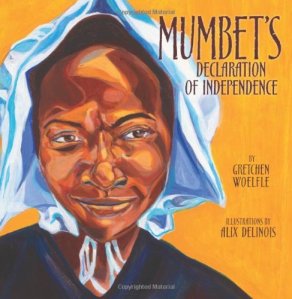 .
.
Mumbet’s Declaration of Independence 
by Gretchen Woelfle & Alix Delinois, illustrator
Carolrhoda Books 2/01/2014
978-0-7613-6589-1
Age 7 to 9 32 pages
.
“All men are born free and equal.” Everybody knows about the Founding Fathers and the Declaration of Independence in 1776. But the founders weren’t the only ones who believed that everyone had a right to freedom. Mumbet, a Massachusetts slave believed it too. She longed o be free, but how? Would anyone help her in her fight for freedom? Could she win against her owner, the richest man in town? Mumbet was determined to try. Mumbet’s Declaration of Independence tells her story for the first time in a picture book biography, and her brave actions set a milestone on the road toward ending slavery in the United States.”
Opening
“Mumbet didn’t have a last name because she was a slave. She didn’t even have an official first name. Folks called her Bett or Betty. Children called her Mom Bett or Mumbet. Others weren’t so kind.”
The Story
The year is 1776 and the United States begins its fight for freedom from the rule of the British by declaring on paper their Declaration of Independence. Mumbet is a slave owned by the richest man in town—the one who is usually the most powerful in town. Colonel John Ashley lived in Massachusetts and owed many businesses. He might have been kind, but his wife was definitely a cruel woman when it came to her husband’s slaves. Mumbet worked for Mrs. Ashley, usually in her kitchen. Mumbet hated that another human owned her, as wouldn’t you or I. She knew servants and hired hands could leave a cruel employer, but Mumbet had no recourse—she’s is property.
As the founding fathers gathered to write the Declaration of Independence, which started the seven-year war against the British, Mumbet served refreshments and tried to listen. The men were against British taxes and feared losing all their rights under British rule. As Mumbet listened, she heard one man say,
“He [the King of England] would make us slaves.”
And,
“Mankind in a state of Nature are equal, free, and independent . . .
God and Nature have made us free.”
After seven years of war against England, and freedom won, the town held a meeting to introduce The Massachusetts Constitution in 1780. It declared,
“All men are born free and equal.”
Mumbet wondered if that meant her. She approached Theodore Sedgwick, a young lawyer who helped draft the Declaration of Independence, and asked him to represent her in a fight for her personal freedom under the new Massachusetts law. He accepted. Mr. Sedgwick reminded the judge and jury that no law existed in Massachusetts making slaves legal and the new constitution now made them illegal. Would the judge and jury agree with Mr. Sedgwick and grant Mumbet her freedom—and the freedom of all slaves in Massachusetts in the process?
Review
Mumbet’s story, a true story, is an unusual biography in that I don’t recall hearing about this woman in any history class, not even American History. Mumbet had strength unseen except on rare occasions. To take your master to court to demand your freedom was a crazy idea. Even white women were still considered their husband’s chattel, why would a slave be above that. How was Mumbet going to convince a jury—not of her peers—and a judge—most likely friends with the richest man in town—that she deserved her freedoms for the same reason as the men deserved theirs from Britain? The new Massachusetts Constitution was not that old and here is this slave trying to gain her freedom, yet she is property. This must have caused some laughter, smirking, and hate. I find this story truly moving. Her new name became Elizabeth Freeman, a most deserved last name.
Mumbet’s clear and succinctly written story tells of an amazing, intelligent, and courageous woman who dared stand up for her rights when no one ever considered her to have rights. She entered a paternal courtroom, a jury not of her peers, and a town overflowing with curious citizens not all of which could have been happy Mumbet wanted freedom. It was probably more hostile, considering ever man probably stood to lose his slaves if Mumbet were successful. That makes Mumbet one of the strongest woman to have ever lived in the United States.

The illustrations are profoundly beautiful with deep rich colors. Even the end pages have an elegance to them. Alix Delinois represented that time in America accurately, with facial expressions that must have matched the frustration felt by most citizens, as the founding fathers wrote the Declaration of Independence. Mrs. Ashley’s cruelty is shockingly visible, immediately making you feel empathy for Mumbet and her daughter. For people sincerely wanting freedom and respect from the British, some were capable of much harm to others.
Thankfully, someone thought to write down Mumbet’s story giving the author great accounts of Mumbet’s life and challenges before, during, and after that day in court. After the story are two pages of author notes. They tell of the help the author received from Catharine Maria Sedgwick, Theodore Sedgwick’s daughter. Catharine wrote Mumbet’s story as it happened, leaving accurate historical documents from which this story was written. These notes are fascinating.Teachers would do well to keep Mumbet’s Declaration of Independence as an adjunct history lesson. It is a story not told in most history classes. Gretchen Woelfle’s impeccable research and storytelling skills gives us a story of slavery not well known in the very country in which it happened—until now. Mumbet’s Declaration of Independence should fascinate kids and adults alike.
MUMBET’S DECLARATION OF INDEPENDENCE. Text copyright © 2014 by Gretchen Woelfle. Illustrations copyright © 2014 by Alix Delinois. Reproduced by permission of the publisher, Carolrhoda Books, Minneapolis, MN.
Buy a copy of Mumbet’s Declaration of Independence at Amazon —B&N—iTunes—Book Depository—Carolrhoda Books—at your local bookstore.
—B&N—iTunes—Book Depository—Carolrhoda Books—at your local bookstore.
.
Learn more about Mumbet’s Declaration of Independence HERE.
Meet the author, Gretchen Woelfle, at her website: http://www.gretchenwoelfle.com/
Meet the illustrator, Alix Delinois, at his website: http://alixdelinois.com/home.html
Find more books a the Carolrhoda Books blog: http://carolrhoda.blogspot.com/
Carolrhoda Books is a division of Lerner Publishing Group, Inc. https://www.lernerbooks.com/
.
Also by Gretchen Woelfle
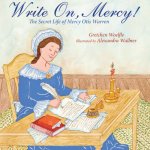
Write On, Mercy!: The Secret Life of Mercy Otis Warren

All the World’s a Stage: A Novel in Five Acts

The Wind at Work: An Activity Guide to Windmills
Also by Alix Delinois
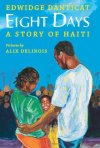
Eight Days: A Story of Haiti
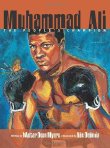
Muhammad Ali: The People’s Champion
.
.

Filed under:
6 Stars TOP BOOK,
Children's Books,
Favorites,
Historical Fiction,
Library Donated Books,
NonFiction,
Picture Book,
Top 10 of 2014 Tagged:
1776,
Alix Delinois,
American Revolutionary War,
Carolrhoda Books,
children's book reviews,
Declaration of Independence,
freedom,
Gretchen Woelfle,
Lerner Publishing Group,
Massachusetts Constitution of 1780,
slavery 







.jpg?picon=1806)
By:
Heather Dyer,
on 6/2/2014
Blog:
An Awfully Big Blog Adventure
(
Login to Add to MyJacketFlap)
JacketFlap tags:
Nesbitt,
Heather Dyer,
Elinor,
faraway tree,
flying bedroom,
The Phoenix and the Carpet,
wishing chair,
freedom,
fairies,
adventures,
security,
Enid Blyton,
flying,
The Lion the Witch and the Wardrobe,
Add a tag
© John Atkinson Grimshaw
I suspect there’s a reason why fairies are found at the bottom of the garden: the bottom of the garden represents the limits of a child’s freedom. It is the furthest they can go from home without entering the big wide world – and it’s in this space between security and freedom that magic occurs.
Children have so little freedom. Freedom beckons, but is also frightening. Perhaps this is why I loved reading so much when I was a child. From the safety of an armchair in the front room or beneath the covers of my bed, I could escape safely.
When I was seven I loved books in which magical items transported children directly from the security of home into another world - stories like Enid Blyton’s
The Wishing Chair, in which an old chair intermittently grew wings and carried the children off on fantastical adventures. There was also Nesbit’s
Phoenix and the Carpet, in which an old rug turns out to be a magic carpet - and let’s not forget that wonderful flying bed in
Bedknobs and Broomsticks - or
The Lion the Witch and the Wardrobe, in which an old wardrobe provides the portal to freedom.
Part of the excitement lay in the fact that the children never quite knew when their adventure might take place. Nesbitt’s children always had to wait until their parents were out – and Blyton’s children had to keep going down to the playroom to see if the chair had grown wings. The appeal also lay in the fact that there was always the risk of mishap - along with the assumption that the children would return home safely.
When my friend’s daughter Elinor told me about a dream in which her bedroom flew, I was delighted. What a wonderful symbol her unconscious had conjured up to grant her both security
and freedom! She could go wherever she wanted without leaving the safety of her bedroom – and what’s more, she would have everything she needed with her: a raincoat, a book to read, a sunhat or a swimsuit …
So, inspired by Elinor’s dream, I wrote
The Flying Bedroom, a series of short adventures in which Elinor’s bedroom takes her to faraway places including a tropical island (from which her bedroom nearly floats away), the theatre (where Elinor reluctantly takes centre stage), and even to the moon (where Elinor helps a man called Niall fix his rocket). I’m hoping that
The Flying Bedroom will satisfy children’s longing for both security and freedom – the tension that never really goes away, no matter how old we are.
You can find more information about Heather Dyer and her books at
www.heatherdyer.co.uk

By: JOANNA MARPLE,
on 5/16/2014
Blog:
Miss Marple's Musings
(
Login to Add to MyJacketFlap)
JacketFlap tags:
Aggrey of Africa,
Christopher Gregorowski,
FLY EAGLE FLY,
Transkei,
freedom,
Africa,
eagles,
Niki Daly,
Desmond Tutu,
parable,
teaching activities,
Perfect Picture Book Friday,
Add a tag
Title: Fly, Eagle, Fly! An African Tale Retold by by Christopher Gregorowski Pictures by Niki Daly Foreword by Desmond Tutu Published by Margaret McLederry Books, 2000 Ages: 5-8 Themes: parables, eagles, freedom Quote, page 10: He climbed up a gully in case the calf had … Continue reading →
By:
Donna Earnhardt,
on 9/25/2013
Blog:
WORDS
(
Login to Add to MyJacketFlap)
JacketFlap tags:
water,
run,
milk,
first world problems,
life in america,
choices,
5k,
#firstworldproblems,
#lifeinamerica,
digging wells,
freedom,
walk,
writing for children,
Add a tag
I have to say, these last three months have not been easy. I had to drink water, milk and other stuff besides my beloved soft drinks. What a serious “first world” problem. Right? And until I started writing this post, I was really proud of myself for giving up the soft drinks for three whole […]

By: KateP,
on 9/6/2013
Blog:
OUPblog
(
Login to Add to MyJacketFlap)
JacketFlap tags:
Books,
History,
freedom,
immigration,
native americans,
America,
persecution,
religious freedom,
pilgrims,
mayflower,
*Featured,
Puritans,
colonialism,
protestants,
plimouth plantation,
Race and Redemption in Puritan New England,
Richard A. Bailey,
the mayflower,
ruffling,
Add a tag
By Richard A. Bailey
“In the name of God, Amen. We whose names are under-written, the loyal subjects of our dread sovereign Lord, King James, by the grace of God, of Great Britain, France, and Ireland King, Defender of the Faith, etc.
Having undertaken, for the glory of God, and advancement of the Christian faith, and honor of our King and Country, a voyage to plant the first colony in the northern parts of Virginia, do by these presents solemnly and mutually, in the presence of God, and one of another, covenant and combine our selves together into a civil body politic, for our better ordering and preservation and furtherance of the ends aforesaid; and by virtue hereof to enact, constitute, and frame such just and equal laws, ordinances, acts, constitutions and offices, from time to time, as shall be thought most meet and convenient for the general good of the Colony, unto which we promise all due submission and obedience. In witness whereof we have hereunder subscribed our names at Cape Cod, the eleventh of November in the year of the reign of our sovereign lord, King James, of England, France, and Ireland, the eighteenth, and of Scotland the fifty-fourth. Anno Dom. 1620.”
When the Mayflower—packed with 102 English men, women, and children—set out from Plymouth, England, on 6 September 1610, little did these Pilgrims know that sixty-five days later they would find themselves not only some 3,000 miles from their planned point of disembarkation but also pressed to pen the above words as the governing document for their fledgling settlement, Plimouth Plantation. Signed by 41 of the 50 adult males, the “Mayflower Compact” represented the type of covenant this particular strain of puritans believed could change the world.
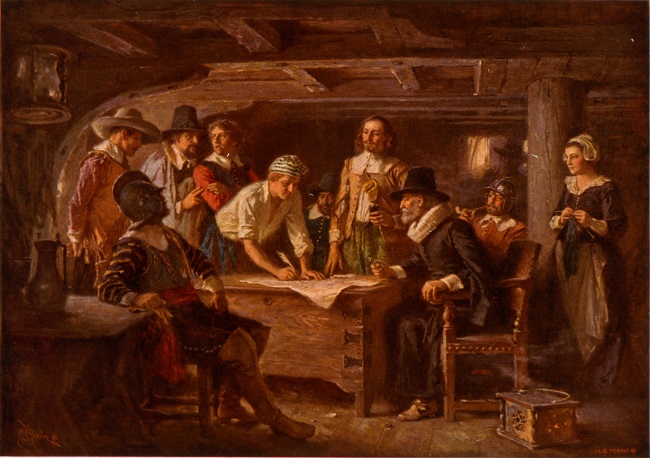
While they hoped to achieve success in the future, these signers were especially concerned with survival in the present. The lives of these Pilgrims for the two decades or so prior to the launching of the Mayflower had been characterized by Separatism. Their decision to separate from the Church of England as a way to protest and to purify what they saw as its shortcomings had led to the necessity of illegally emigrating from the country of England and seeking refuge in the Netherlands. A further separation was needed as these English families realized that the Netherlands offered neither the cultural nor economic opportunities they really desired. But returning to England was out of the question. Thus, in order to discover the religious freedom they desired, these Pilgrims needed to remove yet again, which became possible because of an agreement made with an English joint-stock company willing to pair “saints” and “strangers” in a colony in the American hemisphere.
Despite the fact that they were the ones who had recently arrived in North America, the Pilgrims taxed the abilities of both the land and its native peoples to sustain the newly arrived English. Such taxation became most visible at moments of violent conflict between colonists and Native Americans, as in 1623 when Pilgrims massacred a group of Indians living at Wessagussett. Following the attack, John Robinson, a Pilgrim pastor still in the Netherlands, wrote a letter to William Bradford, Plimouth’s governor, expressing his fears with the following words: “It is also a thing more glorious, in men’s eyes, than pleasing in God’s or convenient to Christians, to be a terrour to poor barbarous people. And indeed I am afraid lest, by these occasions, others should be drawn to affect a kind of ruffling course in the world.” As his letter makes clear, Robinson clearly hoped the colonists would offer the indigenous peoples of New England the prospect of redemption–spiritually and culturally–rather than the edge of a sword. The Wessagussett affair, however, illustrated such redemption had not been realized. From at least that moment on, relationships between English colonists and the indigenous peoples of North America more often than not followed ruffling courses.
While an established state church isn’t a main threat nearly 400 years later, some of the Pilgrims’ concerns still haunt many Americans. Like those English colonists preparing to set foot on North American soil, we remain afraid of those we perceive as different than us–culturally, racially, ethnically, and the like. But the tables are turned. We are now the ones striving to protect ourselves from a stream of illegal and “undocumented” immigrants attempting to pursue their dreams in a new land. Our primary method of protection? Separatism. Like the Pilgrims we often remain unwilling to welcome those we define as different. We’ll look to them for assistance when necessary, rely on their labor when convenient, take advantage of their needs when possible, but we won’t welcome them as neighbors and equals in any real sense nor do we seek to provide reconciliation and redemption to people eager to embrace the potential future they see among us.
Ruffled courses persist as the United States wrestles with how it ought to treat those men, women, and children who, like the Pilgrims of the seventeenth century, are looking for newfound opportunities. As we remember the voyage of the seventeenth-century immigrants who departed England on 6 September 1610 and recall their many successful efforts to establish a lasting settlement in a distant land, we do well to celebrate not only their need to separate but also their dedication to “covenant and combine [them]selves together into a civil body politic.” The world has enough ruffling courses and perhaps needs the purifying reform modeled by the Pilgrims and the potential redemption those like John Robinson hoped for as they agreed to work together for the common good. In short, one would hope that a people whose history was migration from another land would be more welcoming than we often are, especially in our dealings with the immigrants and the impending immigration reform of our own day.
Richard A. Bailey is Associate Professor of History at Canisius College. He is the author of Race and Redemption in Puritan New England. His current research focuses on western Massachusetts as an intersection of empires in the eighteenth-century Atlantic world, fly fishing in colonial America, and the concept of friendship in the life and writings of Wendell Berry. You can find Richard on Twitter @richardabailey
Subscribe to the OUPblog via email or RSS.
Subscribe to only American history articles on the OUPblog via email or RSS.
Image credit: The Mayflower Compact, 1620. Artist unknown, from Library of Congress. Public domain via Wikimedia Commons.
The post Undocumented immigrants in 17th century America appeared first on OUPblog.

Tonight marks the first night of Passover, so I thought I’d share a bit about what the holiday celebrates and what it means to me. Passover is one of the most important Jewish holidays of the year, and is probably the most observed Jewish holiday after Rosh Hashana and Yom Kippur (despite what people think about Hanukah!). 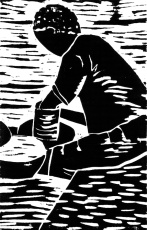
Passover commemorates the story of the Israelites’ exodus from Egypt, as told in the old testament (or, if you’re the kind of person who waits for the movie to come out, as told in The Ten Commandments). According to the story, the Israelites were enslaved in Egypt for 400 years, until God, with the help of Moses, led them out of Egypt and into freedom.
Whether or not you believe in God or the Old Testament, the Passover story resonates. For me, one of the most meaningful parts of it is the acknowledgement of how truly terrible and traumatic slavery is: terrible enough that, although Jews were slaves many thousands of years ago, we still recall the experience in great detail every year. We even eat bitter herbs during the seder, the traditional Passover meal, so that the bitter taste of slavery is fresh on our tongues.
Unfortunately, slavery is not ancient history; in fact, it’s alive and well in many parts of the world. Whether enslaved by law, by force, or by poverty, many human beings living on earth today are not free. Passover is a time to really meditate on what that means – and, perhaps, on our part in it. What have I done to support or abolish slavery? Am I buying from companies with good labor practices? Am I aware of what’s happening in my own community? Are there sustainable ways of dismantling slavery that I can support?
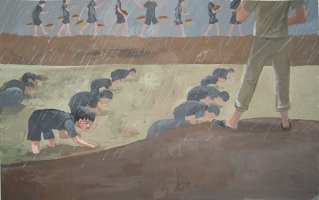
Although slavery is a heavy subject, I actually think it’s one that young people can really understand deeply, and Passover is a great time to explore it together. Over at Pinterest, we’ve rounded up some books for children about Passover and/or freedom. These books are great ways to start a discussion with young readers about slavery, both ancient and modern.
Another resource I’ll be thinking about a lot this year is a documentary I saw last week called Girl Rising, by the organization 10 x 10. The documentary focuses on the stories of ten girls from around the world and shows that for many young women, the passage from slavery to freedom is an education. Definitely worth watching, and suitable for children 12 and up. Taking kids to a screening near you would be a great way to celebrate the holiday.
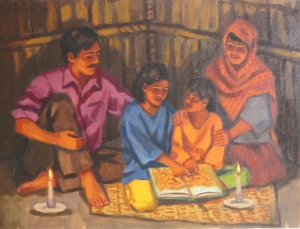
If you have other slavery/freedom related resources for young people, feel free to leave them in the comments. And to all those who are celebrating tonight, I wish you all a very happy (and meaningful) Passover!
Further Reading:
What does Ramadan celebrate?
What does Chinese New Year celebrate?
Filed under:
Holidays Tagged:
Cambodia,
freedom,
Girl Rising,
holidays,
Jewish,
passover,
slavery 


By: Lou Simeone,
on 8/1/2012
Blog:
Sugar Frosted Goodness
(
Login to Add to MyJacketFlap)
JacketFlap tags:
freedom,
cartoons,
quotes,
colors,
cartooning,
cartoon,
color,
vector,
free,
quote,
pride,
cartoonist,
sayings,
Lou Simeone,
samalou.com,
cartoon illustration,
digital colors,
vector artwork,
Samalou too,
cartoon artist,
Add a tag
Do you feel this way? Feel free to share this image if you do.
View Next 25 Posts








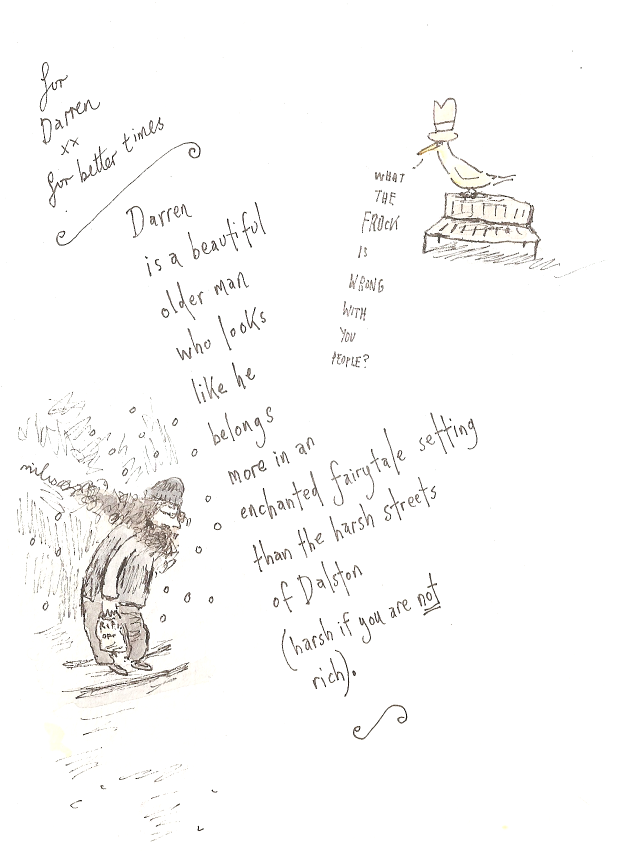
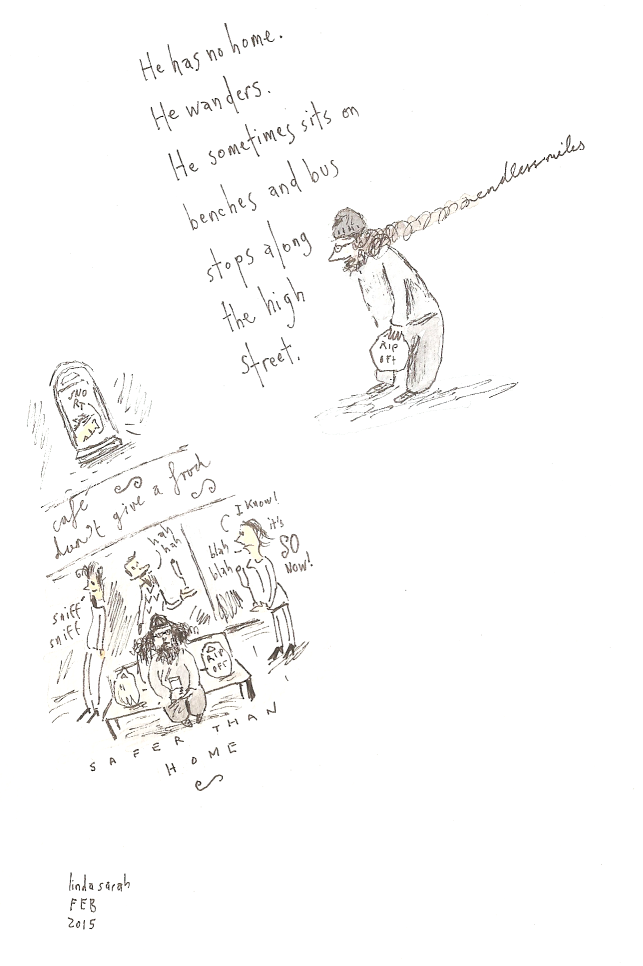
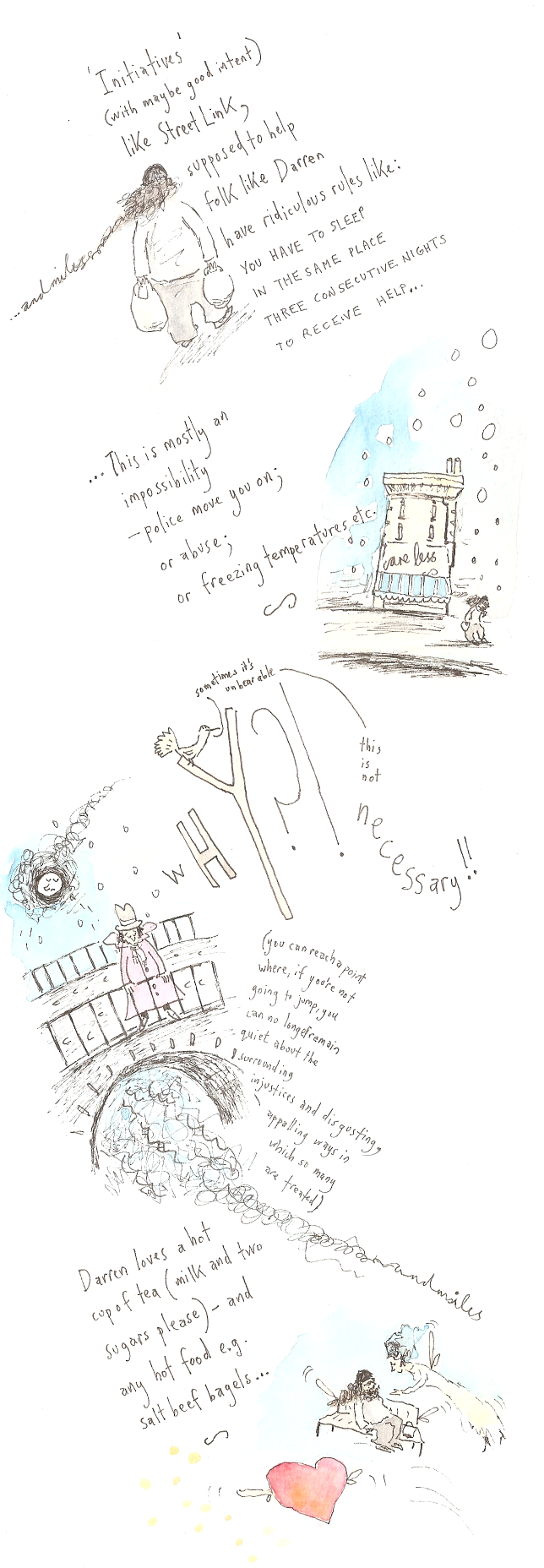
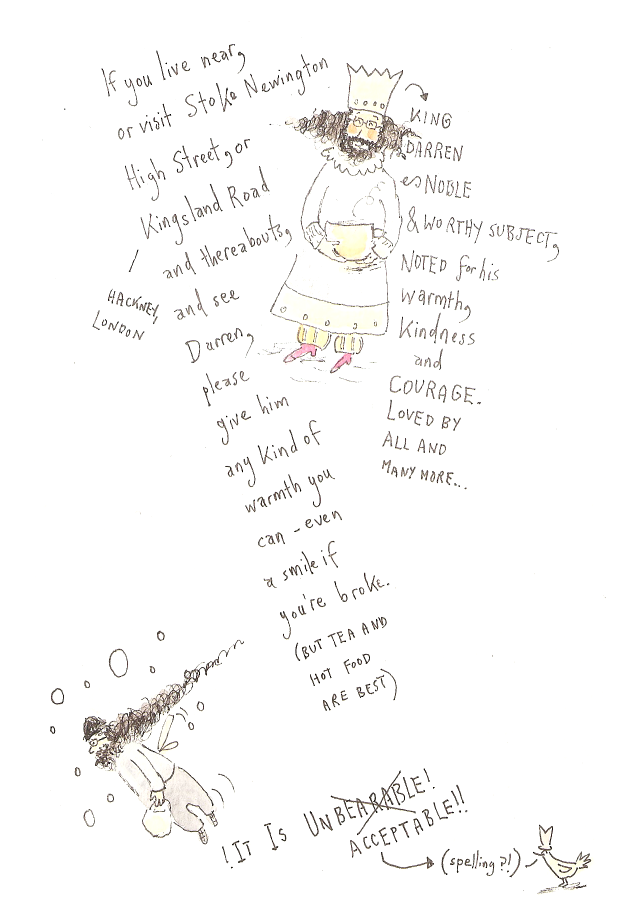
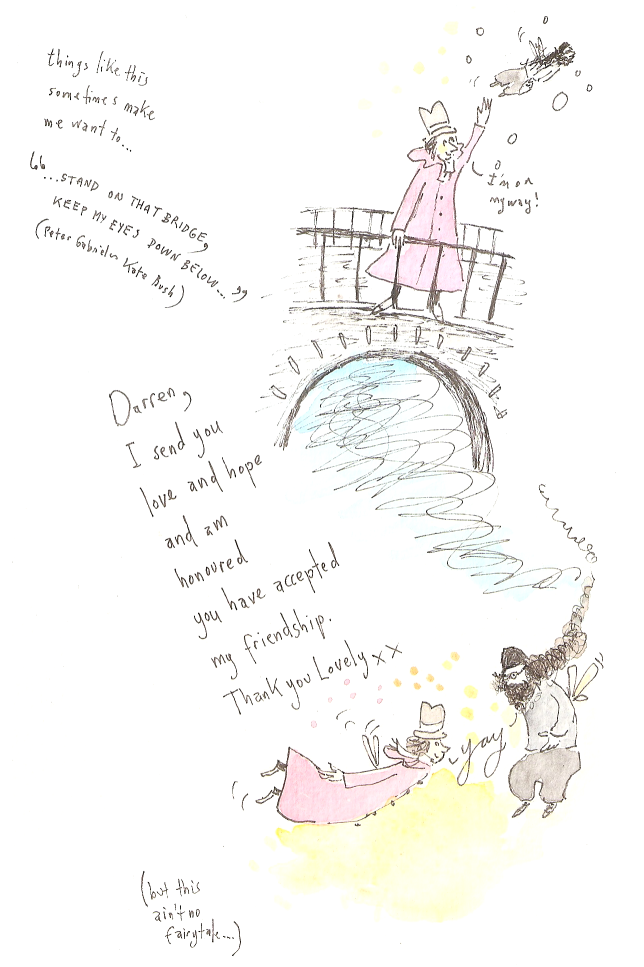














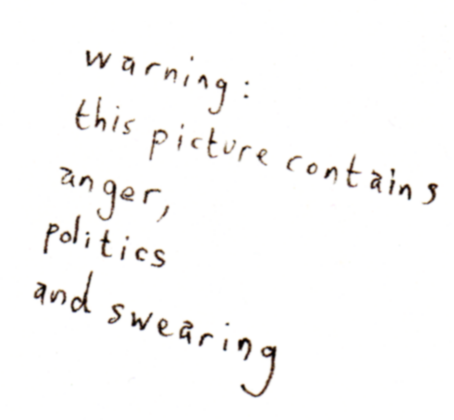
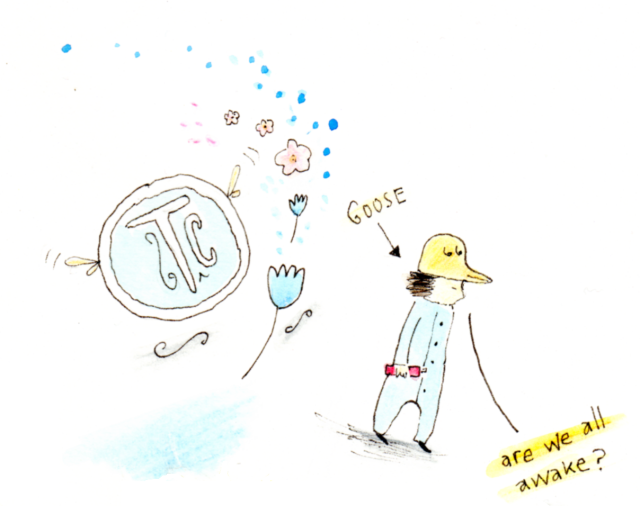
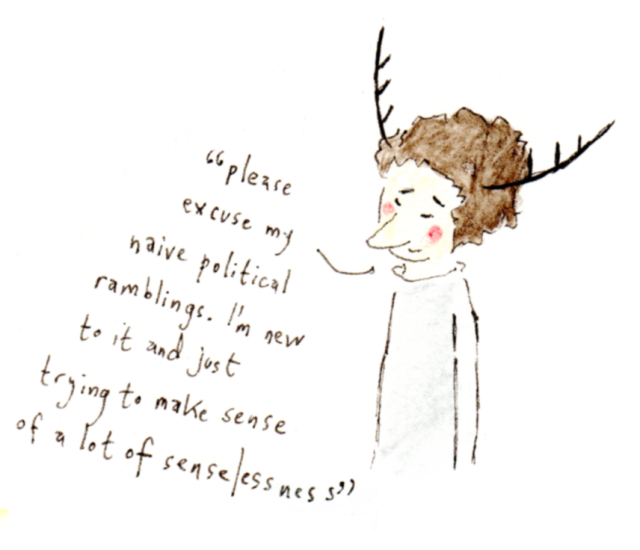



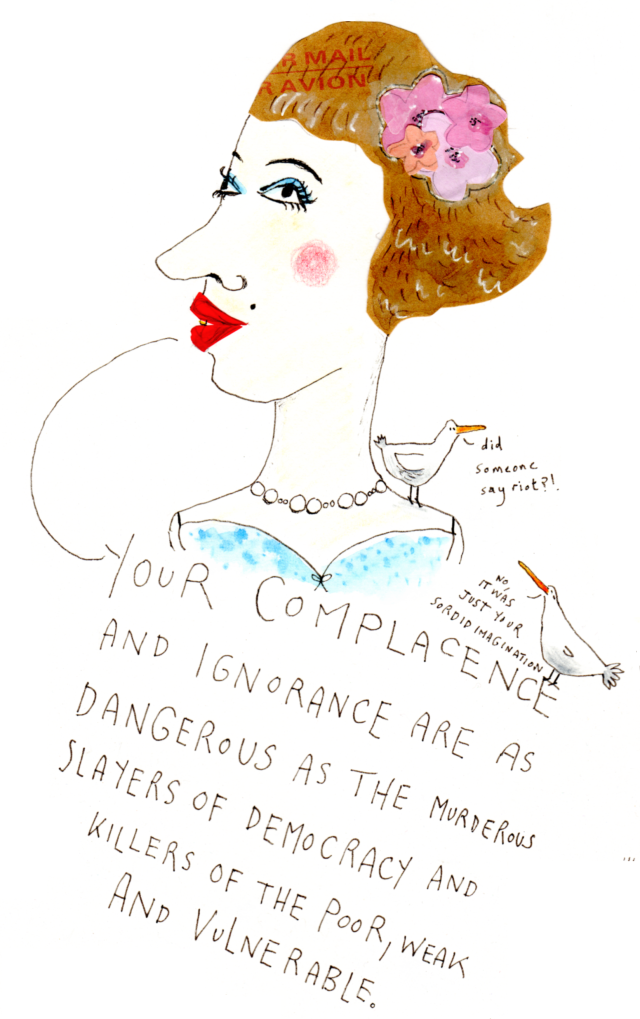

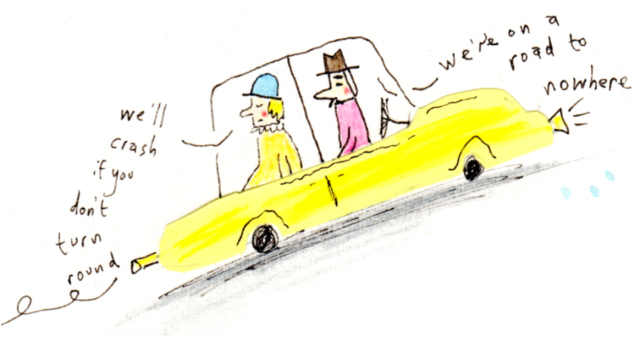







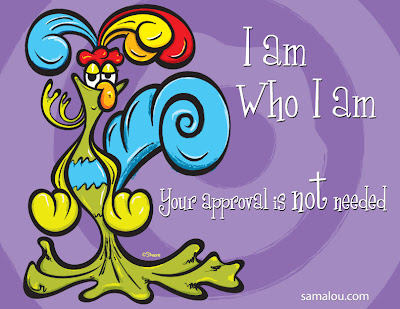
The world needs more Linda Sarahs! This is a bitter and beautiful story.
LikeLike